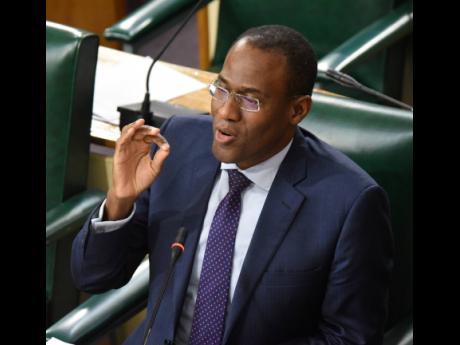Editorial | Detail the salary reform agreement
Given the declared premise of the scheme, we assume that we ought to applaud that the trade unions representing around 60 per cent of public-sector employees have signed compensation reform deals with the Government, which should give the workers higher salaries and streamline the State’s compensation structure.
Except that we do not know what precisely we would be celebrating. The Government has not yet published the broad details of the agreement, much more its fine print. Good order and transparency demand that Nigel Clarke, the finance minister, who has been negotiating with the unions, do so promptly. It should happen no later than when Dr Clarke tables his second Supplementary Estimates, which will reflect nine months of back pay due to the workers for the current fiscal year, as well as their new, higher emoluments going forward.
First, what is it that this newspaper, and most Jamaicans, know about the agreement – and support?
Firstly, the Government’s compensation scheme is a mess. And not just for the fact that the salaries lag significantly behind the private sector, making it difficult to recruit and retain the country’s best talent – which partly explains the inefficiencies and corruption that dog the public sector, and the drag that places on the country’s economic development. Indeed, as Singapore’s Lee Kuan Yew once remarked, “Try getting a government on the cheap, you end up getting a cheap government.”
Further, managing the Government’s payroll must be a treasurer’s nightmare. Until the reforms now being implemented, there were, as Dr Clarke frequently reminded, 325 salary scales and 185 allowances in the public sector. The byzantine system developed largely because, over decades, unions, attempting to compensate for low wages, eked out a non-taxable benefit here, or the creation of a new category/scale there.
UPSHOT OF ADJUSTMENTS
With the revised scheme, the salary scales will be slashed to 16 and non-taxable allowances will be rolled into taxable basic pay. A broad job and compensation review has been completed, leading to an upward adjustment in wages, to be implemented over three years. Minister Clarke has said that no worker will be worse off than before the reforms. Generally, wages are to be higher.
The upshot of these adjustments, based on policy documents published earlier this year, is that the Government’s wage bill for the current fiscal year, ending next March, will be $268.285 billion, an increase of approximately $45 billion, or 20 per cent. By the end of the implementation period (2025-26), the wage bill will rise by $125 billion, or 56 per cent higher than 2021-2022. The wage-to-GDP ratio will move from 9.9 per cent to 11.5 per cent, having drifted lower from an estimated peak of 12.8 per cent in 2023-24.
However, these numbers overstate the real rise in public-sector wages, given that many allowances were not previously captured as wages, when they ought to have been. That bit of public-sector artifice told heavily when public servants retired and the wage on which their pensions were calculated were often lower than what they were actually paid – as paltry as some of the remunerations were.
But what we have sketched are the broad frames of the deal. What is lacking are the details – the fine print. For instance, there has been no disclosure about the specifics of the 16 new salary scales, and which of the old categories now fall within them. Neither is it known what are the new salaries, compared to previous ones. Nor is it clear what adjustments will be made in each of these bands over the period of implementation.
IMPORTANT INFORMATION
This information is important for any calculation of the real level of increase that will be received by various categories of civil servants, and how to determine the comparative pay scales of government and private-sector workers.
This ought not to be privileged information. It should be open to the ultimate employers of public servants, the taxpayers of Jamaica, who should know how workers are compensated and for what.
Indeed, Minister Clarke has said that he wishes to make the payment arrears, covering the first nine months of the fiscal year, before Christmas. The Supplementary Budget that he will take to Parliament in December will reflect that bill, plus the adjustments for the rest of the year.
We, however, take nothing for granted.
Concomitant with the Supplementary Estimates, and preferably before, Dr Clarke should table a ministry paper with the full details of the new compensation reform package and what is expected in exchange from public-sector employees. In other words, there should be performance targets set for the public sector. If that element of the agreement cannot be tied down in a ministry paper, it should be contained in a Green Paper published, at the very latest, by mid-January.

